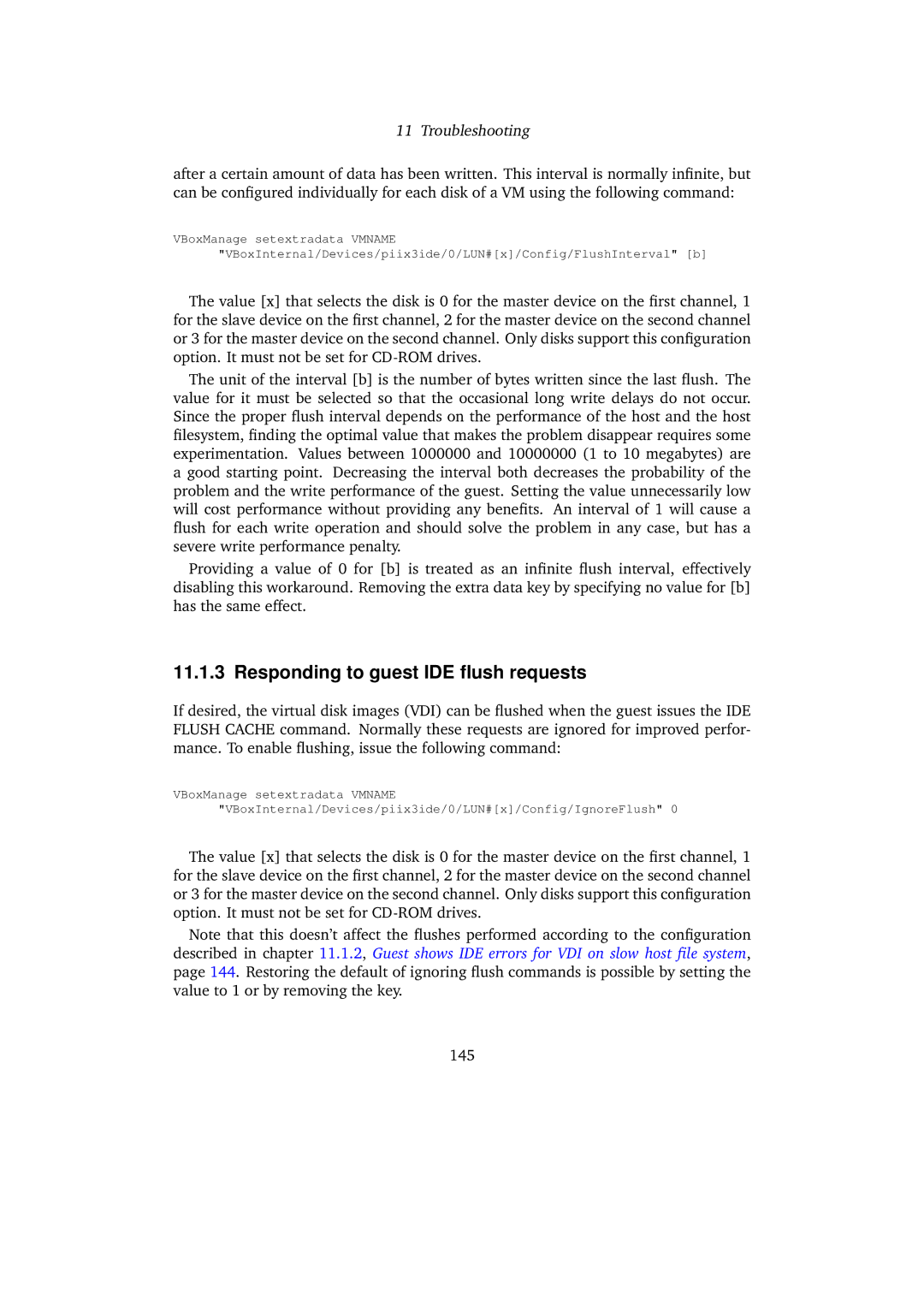11 Troubleshooting
after a certain amount of data has been written. This interval is normally infinite, but can be configured individually for each disk of a VM using the following command:
VBoxManage setextradata VMNAME "VBoxInternal/Devices/piix3ide/0/LUN#[x]/Config/FlushInterval" [b]
The value [x] that selects the disk is 0 for the master device on the first channel, 1 for the slave device on the first channel, 2 for the master device on the second channel or 3 for the master device on the second channel. Only disks support this configuration option. It must not be set for
The unit of the interval [b] is the number of bytes written since the last flush. The value for it must be selected so that the occasional long write delays do not occur. Since the proper flush interval depends on the performance of the host and the host filesystem, finding the optimal value that makes the problem disappear requires some experimentation. Values between 1000000 and 10000000 (1 to 10 megabytes) are a good starting point. Decreasing the interval both decreases the probability of the problem and the write performance of the guest. Setting the value unnecessarily low will cost performance without providing any benefits. An interval of 1 will cause a flush for each write operation and should solve the problem in any case, but has a severe write performance penalty.
Providing a value of 0 for [b] is treated as an infinite flush interval, effectively disabling this workaround. Removing the extra data key by specifying no value for [b] has the same effect.
11.1.3 Responding to guest IDE flush requests
If desired, the virtual disk images (VDI) can be flushed when the guest issues the IDE FLUSH CACHE command. Normally these requests are ignored for improved perfor- mance. To enable flushing, issue the following command:
VBoxManage setextradata VMNAME "VBoxInternal/Devices/piix3ide/0/LUN#[x]/Config/IgnoreFlush" 0
The value [x] that selects the disk is 0 for the master device on the first channel, 1 for the slave device on the first channel, 2 for the master device on the second channel or 3 for the master device on the second channel. Only disks support this configuration option. It must not be set for
Note that this doesn’t affect the flushes performed according to the configuration described in chapter 11.1.2, Guest shows IDE errors for VDI on slow host file system, page 144. Restoring the default of ignoring flush commands is possible by setting the value to 1 or by removing the key.
145
